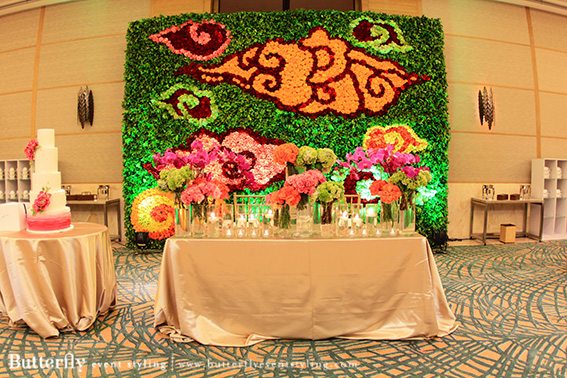
Backdrop has so many functions which make them important elements in wedding. You can have them as a display simply just to create a focal point or you can use them as photo booth, or arbor. Backdrop can also used as a cover, to transform the ugly boring walls and turn them into interesting spots. But if you want to incorporate a creative backdrop for your ceremony, the sky is the limit.


Butterfly has done many times creating backdrops, from the nature-inspired ones with paper flowers and greeneries to the unique one-of-a-kind ones which elevate the theme into the next level. Whatever theme you pick, ceremony backdrop should be considered an important thing because it’s the main spot to take photographs. Because of that, the backdrop should be properly built and well decorated as the main element to put everything together as well as to tell a story about a wedding ceremony in frames.

So, how do we build a perfect ceremony backdrop? Like most of the decoration advice we’ve told you before: start with a theme and stick to it. You’re planning a city-inspired wedding? Choose signature elements from the city to be highlighted in the backdrop, like we’ve done last time with the London-inspired wedding, we put items related to the city such as The Big Ben and Double Decker. If you want to go all-out when building a backdrop, try 3-dimensional backdrop, put other real stuff like vintage bicycle and treasure chest and there you have it, a 3-dimensional backdrop.

If you want a simpler style for your backdrop but bold enough to make a statement, you can create a backdrop with writings on it. Calligraphy is still a hot stuff today, you can make use of the talent of a calligraphy artist to write your favorite quotes or lines, or simply just write the name of the bride and groom and their parents on giant blackboard backboard just like we did last time for the lovely couple: Giri and Dheri.


Another important thing to consider when creating a backdrop, make sure that it has good and enough lightings for photography purposes. It is because great images are produced when lighting flatters the object.












